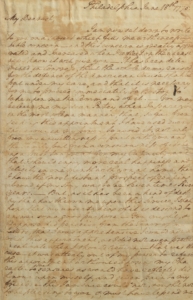Enslaved Labor and Building the Smithsonian
· Enslaved and Free ·
Historian Mark Auslander details the roles of enslaved workers in building the original Smithsonian “castle.” Some of the slave workers involved labored at Maryland quarries owned by Peter family members and had roots in enslaved families owned by First Lady Martha Custis Washington, who bequeathed 90 such “dower slaves” to Martha Custis Peter, original owner of Tudor Place. Tudor Place Archivist Wendy Kail assisted with this essay on the darker history of an iconic national institution.





